

The regional transportation authority for Los Angeles placed an order for 550 American-made buses last month, Huffington Post reported. The news comes at a time of presidential promises to both ramp up American manufacturing and rethink federal infrastructure spending.
The Los Angeles County Metropolitan Transportation Authority (L.A. Metro for short) struck a $305 million deal with a Canadian company, New Flyer Industries, to take charge on the creation of its new fleet of clean-fuel buses. The deal is unique in that it hinged on a commitment from the manufacturer to make the buses in the U.S. and create a certain number of quality jobs. (Most buses serving the U.S. are built outside of the country.)
Despite its base in Winnipeg, Manitoba, New Flyer Industries has factories at three different locations in the states of Minnesota and Indiana. It intends to expand operations at its manufacturing plant in St.
» Read more about: Stop Throwing American Manufacturing Jobs Under the Bus »


Hundreds of Waste Management workers belonging to the International Longshore and Warehouse Union (ILWU) struck three facilities Friday morning, March 15, shutting down the company’s East Bay operation in for five hours. The successful job action was made possible by the support from hundreds of Teamster members who honored picket lines and refused to drive the company’s trucks that collect refuse and recycling early each morning from residential and industrial customers. Additional support came from members of the Machinists Union who honored picket lines by refusing to report for their maintenance and repair jobs during the strike.
ILWU members organized their picket lines beginning at 3 a.m. outside the company’s headquarters in Oakland, a recycling facility in San Leandro and the massive regional landfill in Livermore/Altamont. The job action was sparked by the company’s blatant law-breaking against employees, including retaliation that targeted immigrant workers.
In the days leading up to the strike,
» Read more about: ILWU: Waste Management Inc. Targets Immigrant Workers »
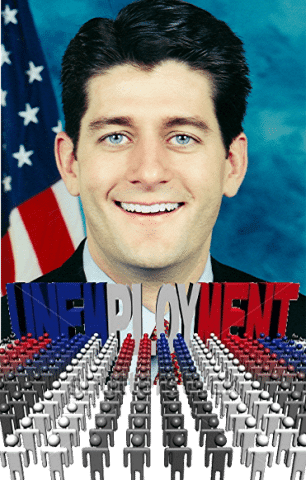

“Our biggest problems over the next 10 years are not deficits,” the President told House Republicans Wednesday, according to those who attended the meeting.
The President needs to deliver the same message to the public, loudly and clearly. The biggest problems we face are unemployment, stagnant wages, slow growth and widening inequality — not deficits. The major goal must be to get jobs and wages back, not balance the budget.
Paul Ryan’s budget plan — essentially, the House Republican plan — is designed to lure the White House and Democrats, and the American public, into a debate over how to balance the federal budget in 10 years, not over whether it’s worth doing.
“This is an invitation,” Ryan explained when he unveiled the plan Tuesday. “Show us how to balance the budget. If you don’t like the way we’re proposing to balance our budget, how do you propose to balance the budget?”
Until now the President has seemed all too willing to engage in that debate.

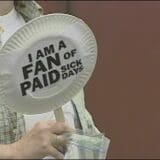
In a growing sign of civic concern about the lack of employer-provided sick leave, Philadelphia’s city council voted Thursday morning to require most businesses to offer some form of the benefit to their workers. On Wednesday, Portland’s city council also voted to require private businesses to offer sick leave to their workers. The Portland council vote was unanimous; the Philadelphia vote was a veto-proof 11 to six.
A Los Angeles Times business-section story reported that, prior to the Portland passage, only three other U.S. cities have mandated that employers provide workers with sick leave. (The state of Connecticut also requires it.) However, all employers affected by living wage laws in Los Angeles and Long Beach are also obligated to offer sick leave benefits.
An awareness of links between the spread of workplace illnesses and the lack of paid sick time – which discourages ill workers from staying home —
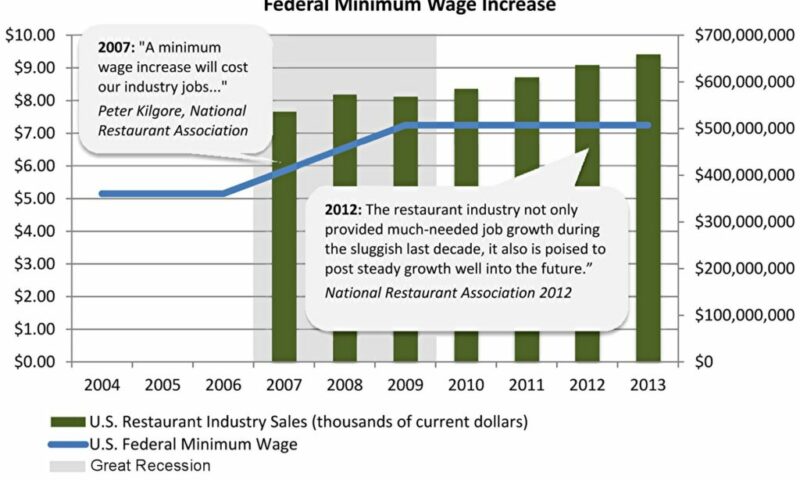
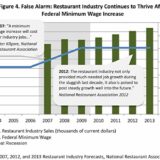
In her Congressional testimony from 1959, Eleanor Roosevelt noted the repetitive quality of objections raised by minimum wage opponents over the previous five decades. More than 50 years later, it appears that nothing has changed.
Our new report, published with the National Employment Law Project, documents the rhetorical onslaught launched by minimum wage opponents over the past 100 years. Rather than approaching these claims at face value, we step back and review how minimum wage opponents have presented their case through roughly a century’s worth of public statements, congressional testimonies, editorials, media interviews, and other public records, devoting a critical eye to the trajectory of these criticisms over time.
Sample quotes from Consider the Source: 100 Years of Broken-Record Opposition to the Minimum Wage:
1937
“Rome, 2,000 years ago, fell because the government began fixing the prices of services and commodities.
» Read more about: Minimum Wage Foes: Crying Wolf All the Way to the Bank »


Last week’s headlines highlighted record prices for the Dow Jones stock market average. But who really wins when stock prices soar?
The biggest American winner was Rupert Murdoch, the boss of right-wing Fox News and a global media empire. He made $214.81 million in a single day, according to Forbes magazine. Mexican magnate Carlos Slim did better still, with a staggering $1.09 billion one-day increase in [his] wealth. They, plus the other 98 individuals on Bloomberg’s list of the world’s wealthiest people, made $28.7 billion in a single day.
But what about us? Here are some of the hard economic facts that really matter to the 99 Percent:
» Read more about: The Dow Is Up But the 99 Percent Are Down »
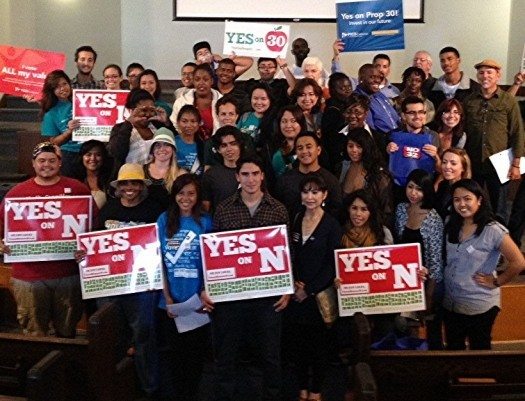

On Sunday the Los Angeles Times published a story about the important successes of campaigns to pass local minimum wage and living wage laws. However, while highlighting new developments that will impact local economies and the lives of workers, the Times missed the real story and forces behind this growing trend.
The piece focused on two ballot-box victories for living wage laws: a minimum wage for hotel workers in Long Beach and a citywide minimum wage increase in San Jose.
“The victories put these two California cities on the cusp of an emerging trend,” wrote Wesley Lowery. “Ballot initiatives, labor experts say, have the potential to rewrite labor’s playbook for how to win concessions from management.” Throughout the piece, Lowery presented the minimum wage ballot measures as a tactic put in place and managed from behind the scenes by labor leaders.
In fact,
» Read more about: L.A. Times Misses the Story Behind Living Wage Campaigns »
In the previous week we reposted this fact-packed, viral video (more than four million views at last count) about economic inequality in America. Its deft use of graphics makes this a handy resource — and worth a second look.


(Lisa Schiff is a member of Parents for Public Schools of San Francisco. Her post first appeared in BeyondChron and is republished with permission.)
A friend of mine emailed me last fall incredibly worried about the impact of potential sequestration cuts on schools and students across the country. He was a long-time Washington D.C.-based public education advocate, so I was simultaneously unshaken and unnerved by his concern. Sequestration seemed like a D.C.-based fear, so unlikely to actually happen given the blowback that would surely come from such imprecise cuts. But my friend’s many years of fighting for resources for children’s education meant that I couldn’t really ignore his concerns, and so his words remained a low-level worry until March 1, when I had to concede that he’d been right all along.
Funding for shared needs like education is always at risk and the past few weeks have highlighted just how great that risk is.


Shoddy political theater distracts people with vague demons called debt ceiling, fiscal cliff and now, sequester. Party leaders posture for major donors, media boosters and the faithful. They claim to save us from the demons. Meanwhile, backstage they all agree on austerity as the “necessary” response to “our major problem,” namely federal budget “imbalance.” “We” are spending “beyond our means,” accumulating “government debts.” So “we” must raise taxes and cut spending – impose austerity – to regain balance.
On January 1, payroll taxes rose (from 4.2 to 6.2 percent) for 150 million Americans. Their checks shrank as that regressive tax became more so. Obama’s hyped “tax increase for the rich” was comparatively trivial. It affected only the very few Americans earning over $450,000, raising their top tax rate from 35 percent to 39.6 percent. Our leaders hope we forgot the 1950s and 1960s, when the top tax rate was 91 percent. On March 1,


To the let’s-cut-entitlements crowd, what’s wrong with America is that seniors are living too high off the hog. With the cost of medical care still rising (though not as fast as it used to), the government is shelling out many more dollars per geezer (DPG) than it is per youngster (DPY). The solution, we’re told, is to bring down DPG so we can boost DPY.
We do indeed need to boost DPY. And we need to rein in medical costs by shifting away from the fee-for-service model of billing and paying. But as for changing the way we calculate cost-of-living adjustments for seniors to keep us from overpaying them — an idea beloved of Bowles, Simpson, Republicans and, apparently, the White House — this may not be such a hot idea, for one simple reason: An increasing number of seniors can’t afford to retire.
Nearly one in five Americans age 65 and over — 18.5 percent — were working in 2012,


Growing up, I saw Leimert Park as our version of Harlem: the center of commerce, music and culture for the African-American community in Los Angeles. The last time I was in Leimert Park, I saw shuttered storefronts and empty sidewalks — a stark difference from the hustle and bustle I knew from growing up not far from there. I am sure that it is even more of a shock for the generations of Crenshaw residents before me.
We now have an opportunity to revitalize this once economically thriving community, though, via the Crenshaw/LAX Line, a $1.8 billion light-rail project expected to start construction in early 2014. There is a catch – a Leimert Park station, which would be the crown jewel of the line, is startlingly missing from current plans. There needs to be a Leimert Park station.
Last May, community residents and advocates packed the Metro board room in hopes of hearing good news about the inclusion of their community in the proposed stations.


Today the Dow Jones Industrial Average rose above 14,270 – completely erasing its 54 percent loss between 2007 and 2009.
The stock market is basically back to where it was in 2000, while corporate earnings have doubled since then.
Yet the real median wage is now eight percent below what it was in 2000, and unemployment remains sky-high.
Why is the stock market doing so well, while most Americans are doing so poorly? Four reasons:
First, productivity gains. Corporations have been investing in technology rather than their workers. They get tax credits and deductions for such investments; they get no such tax benefits for improving the skills of their employees. As a result, corporations can now do more with fewer people on their payrolls. That means higher profits.
Second, high unemployment itself. Joblessness all but eliminates the bargaining power of most workers – allowing corporations to keep wages low.
» Read more about: Wall Street: Bull Market for Stocks, Bear Cave for Workers »
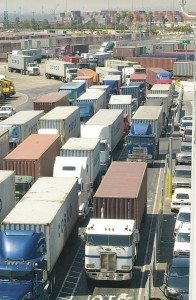

Last week, we reported on the legal struggle at port trucking company Seacon Logix, whose drivers filed claims with the California Division of Labor Standards Enforcement (DLSE) seeking reimbursement for a number of wage-and- hour violations, including illegal paycheck deductions made by the company. After the DLSE ruled in favor of the drivers in early 2012 – finding that the drivers were not independent contractors, but were actually misclassified employees – the company appealed the ruling.
On Thursday, a California Superior Court judge ruled in favor of the drivers in every respect, coming to the same conclusions as the DLSE. The court found that drivers were misclassified and ordered the company to pay the four drivers $107,802. Five additional drivers at the same company have similar claims pending.
This is the first in an anticipated wave of rulings addressing conditions for misclassified port truck drivers.
» Read more about: Court: Seacon Logix Port Truck Drivers Are Misclassified »


In societies across the globe, men demonstrate their manhood in different ways. There are many wonderful tracts on the topic. However, in the culture of Washington DC, the best way to demonstrate your manhood is to express your willingness to cut Medicare and Social Security. There is no better way to be admitted into the club of the Very Serious People.
This is the reason that we saw White House spokesman Jay Carney tell a press conference. He told the reporters that President Obama is still willing to cut Social Security benefits by using the chained Consumer Price Index as the basis for the annual cost of living adjustment (COLA). This willingness to cut the benefits of retirees establishes President Obama as a serious person in elite Washington circles.
While most of the DC insiders probably don’t understand the chained CPI, everyone else should recognize that this technical fix amounts to a serious cut in benefits.
» Read more about: Why the Chained Consumer Price Index Threatens Our Elderly »

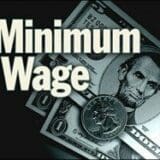
When President Obama proposed an increase in the federal minimum wage last month, you could almost hear conservative economists and pundits smacking their lips in anticipation. After all, there’s nothing that gets this crowd going like mandating a wage increase, even if it’s from the downright Dickensian $7.25 currently required, to a still paltry $9 — or just under $19,000 a year.
Minimum wage foes almost always base their opposition on the supposed damage that these laws do to the businesses that have to pay them and the workers who receive them. Despite reams of research to the contrary, they persist in claiming that minimum wage increases force businesses to lay off workers, hurting the very people who should benefit.
There is another argument, however, against minimum wage laws, one that was trotted out in a column by Slate’s Matt Yglesias. The real problem with these laws is not that they hurt workers and their employers,
» Read more about: The Right to Be Poor: Matt Yglesias’ View of Minimum Wage Laws »
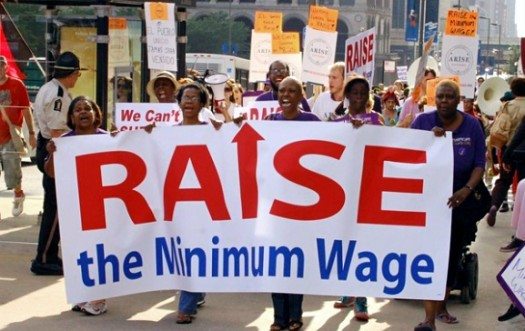
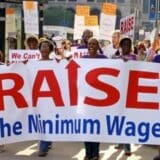
Sustainable economies are built on good jobs. If people don’t earn enough money, they can’t keep the economy growing by buying goods and services.
This basic fact is lost on opponents of minimum-wage increases, who for decades have been arguing that these pay hikes hurt businesses, cause job loss and therefore are bad for the economy.
Repetition of an argument might keep it in the news, but it doesn’t make it factually credible. So it is with minimum-wage rejectionists, who have succeeded in getting at least equal time for their assertions with every proposed wage increase, even though their claims have been debunked over and over again.
It is no surprise, then, that the Reason Foundation’s Adam Summers in his op-ed in the Business Journal predicts dire consequences if California were to increase its minimum wage law (“Higher Minimum Wage Will Lower Job Prospects,” February 11).
» Read more about: Raising the Minimum Wage Will Lift the Economy »
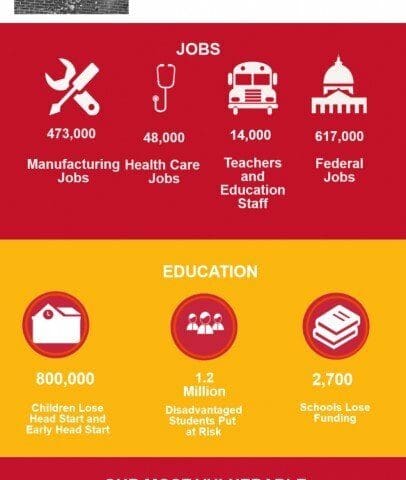
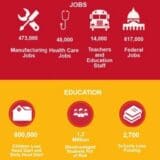
(This article, which first appeared on Equal Voice, includes information from Equal Voice News reporter Kathy Mulady and Associated Press writers Nedra Pickler, Jim Kuhnhenn and Stephen Ohlemacher. Please see Equal Voice’s infographic at the end of this post. Republished with permission.)
Unless sequestration is stopped by an act of Congress, the budget cutting will [contine], reducing funding to thousands of programs that took years to build, and provide a safety net for millions of poor working families.
Under the plan, every dollar approved each year by Congress [will] be slashed by a uniform amount, resulting in at least temporary layoffs for hundreds of thousands of public and private-sector workers. Programs like Medicare and Social Security are exempt, but the slashing of other programs will slow the nation’s fragile economic recovery.
On March 1 automatic cuts of $85 billion from a $3.6 trillion budget [began].
» Read more about: The Sequester: Families and Kids Not on Congress’ Agenda »


“In 1933 we reversed the policy of the previous Administration. For the first time since the Depression you had a Congress and an Administration in Washington which had the courage to provide the necessary resources which private interests no longer had or no longer dared to risk.
This cost money. We knew, and you knew, in March, 1933, that it would cost money. We knew, and you knew, that it would cost money for several years to come. The people understood that in 1933. They understood it in 1934, when they gave the Administration a full endorsement of its policy. They knew in 1935, and they know in 1936, that the plan is working.”—FDR, 1936
Eighty years ago this month, at the height of the worst economic crisis in our nation’s history, Franklin D. Roosevelt delivered on his promise to launch a New Deal for the American people.
» Read more about: The Sequester Puts Humanity Last — FDR Put It First »
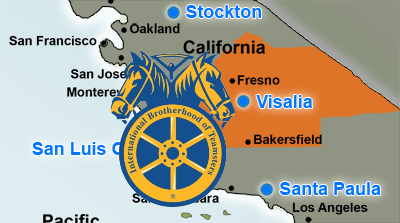

On February 14, 68 employees of VWR in Visalia voted affirmatively to join Teamsters Local 948 in an election supervised by the National Labor Relations Board. The election punctuates a very high profile and controversial move by the company from the Bay Area to Visalia and continues the Teamsters struggle with the company.
VWR, which [distributes laboratory equipment], was founded as a local California company, has grown into a global corporation, reporting more than $4.1 billion in sales for 2011. The Teamsters have represented VWR employees at their distribution center in Brisbane for over 50 years. For most of that time, labor-management relations were good. But when Madison Dearborn, a Chicago-based private equity firm, bought the company in 2007 things quickly changed.
In the midst of contract negotiations in 2010, VWR announced plans to close its Brisbane distribution center and move its operations 220 miles south to a new 500,000 square foot facility in Visalia.
» Read more about: Teamsters Win Election at Runaway Company in Visalia »